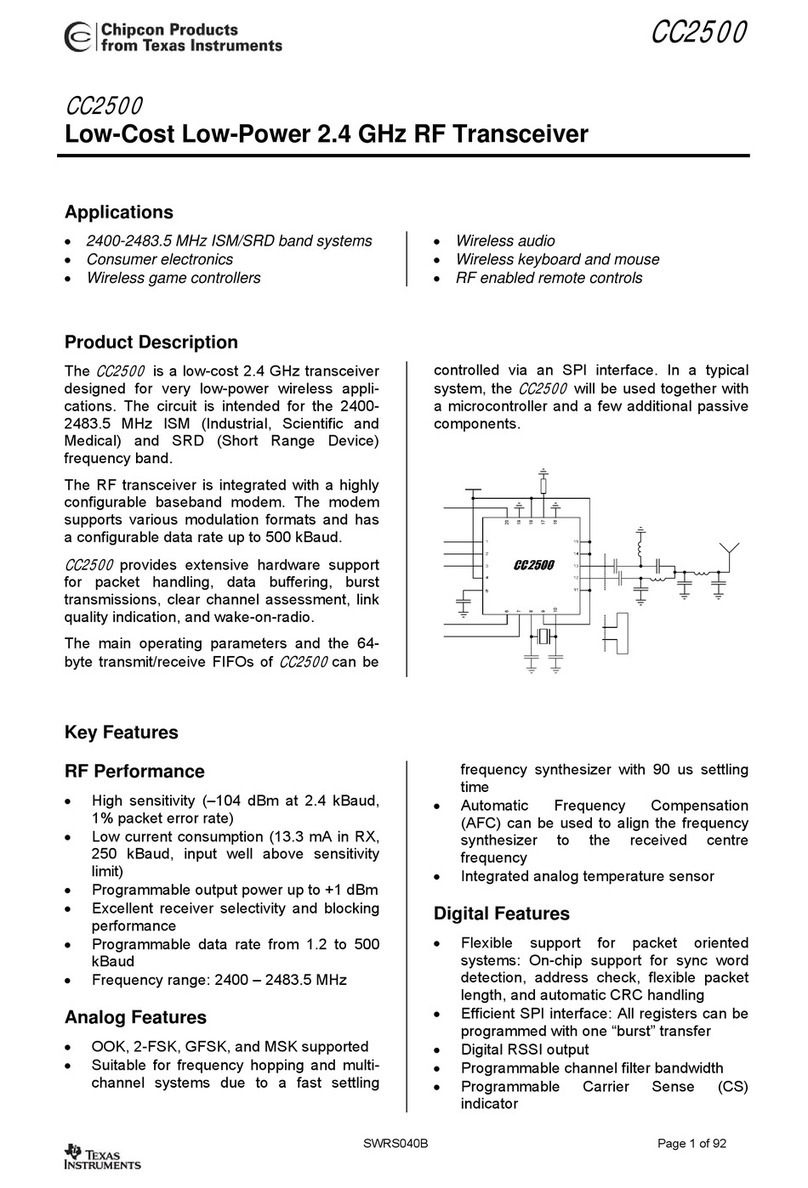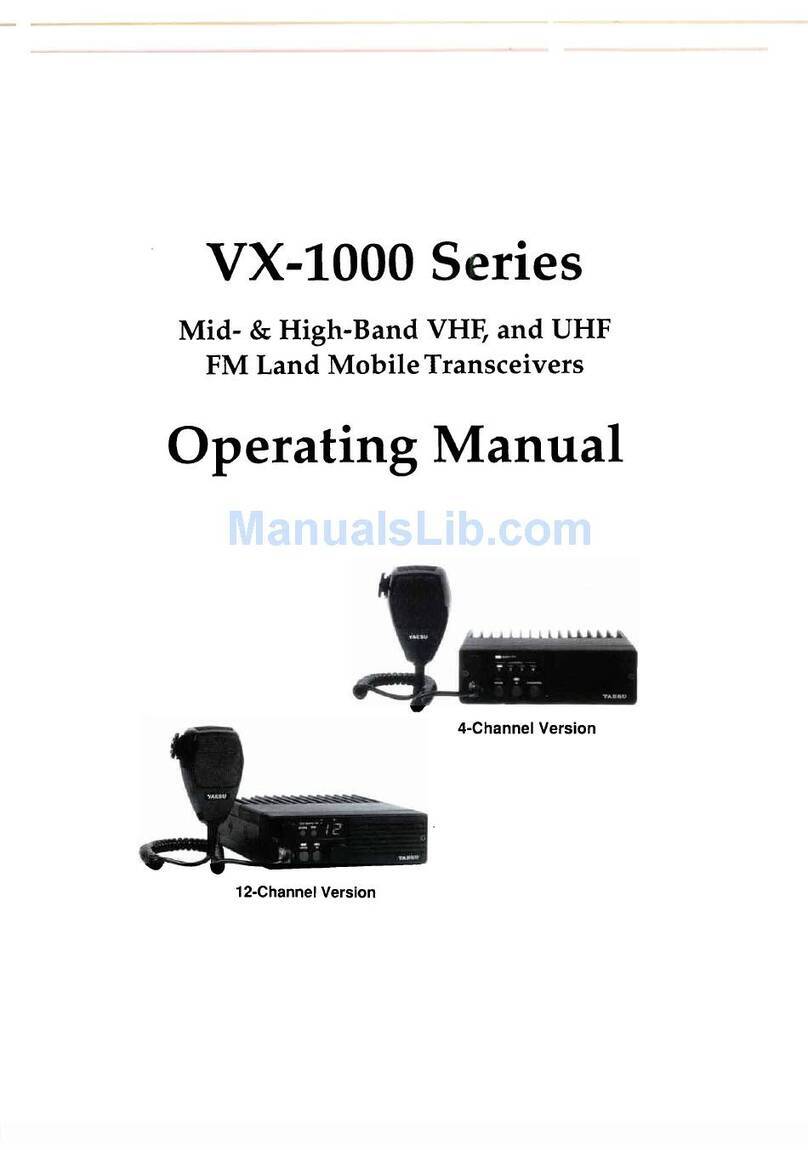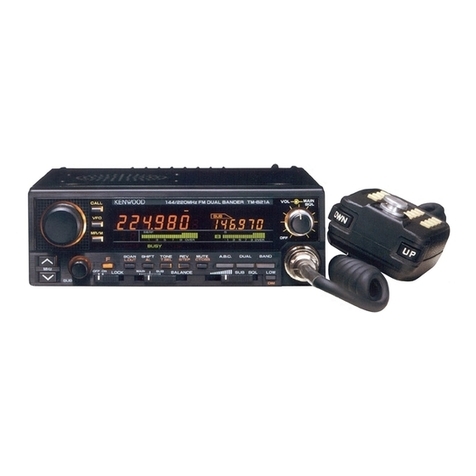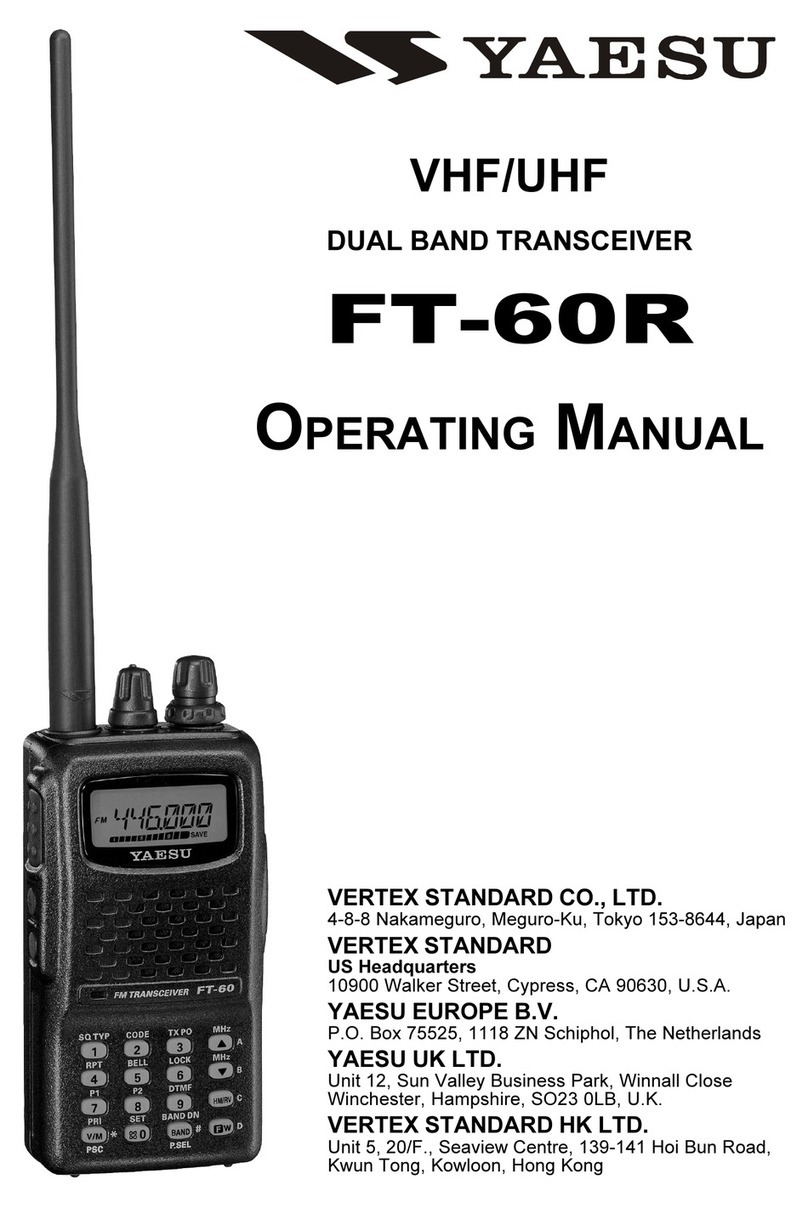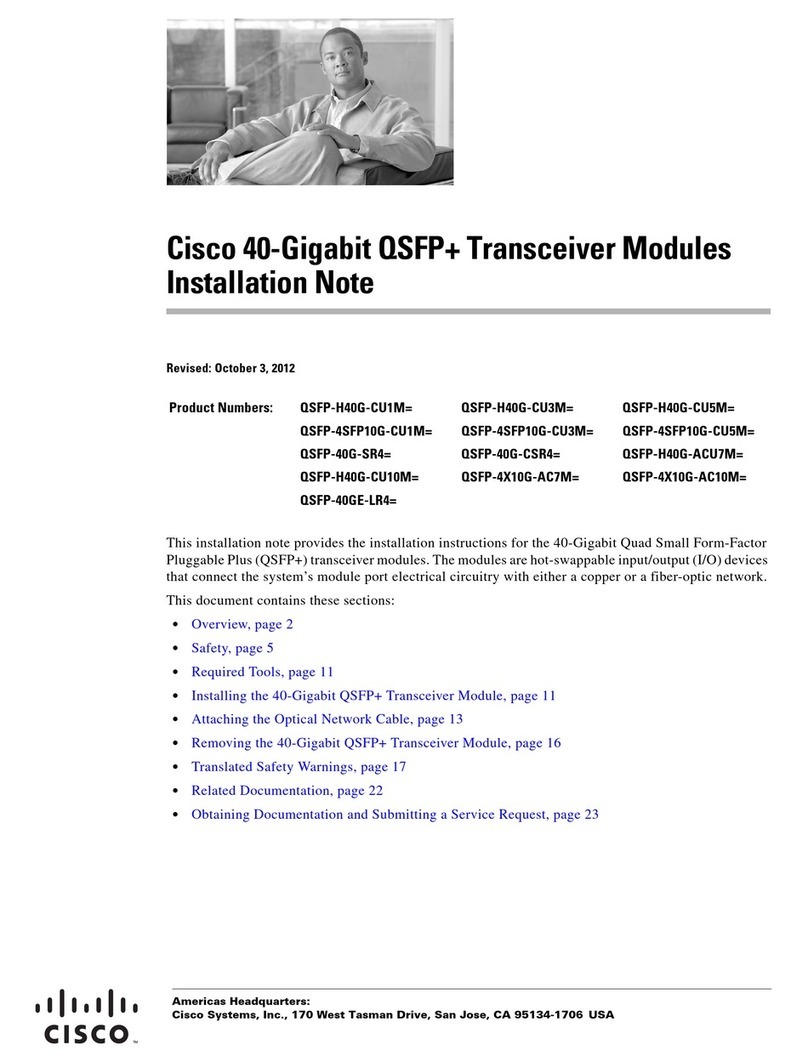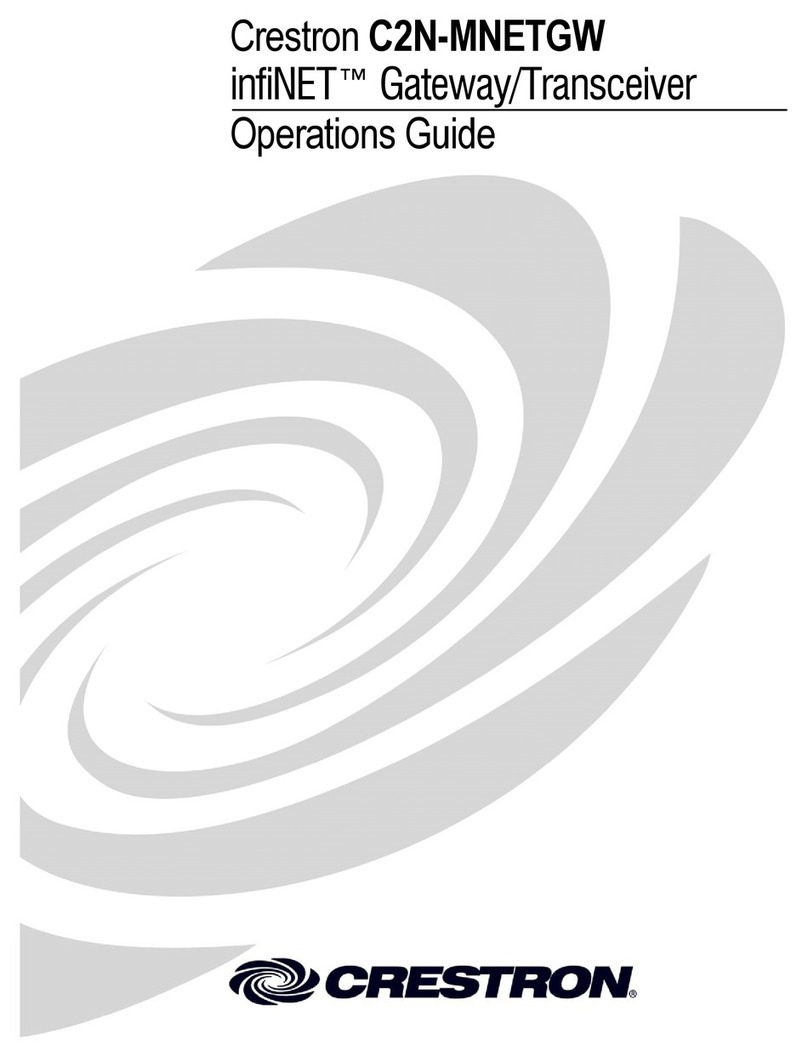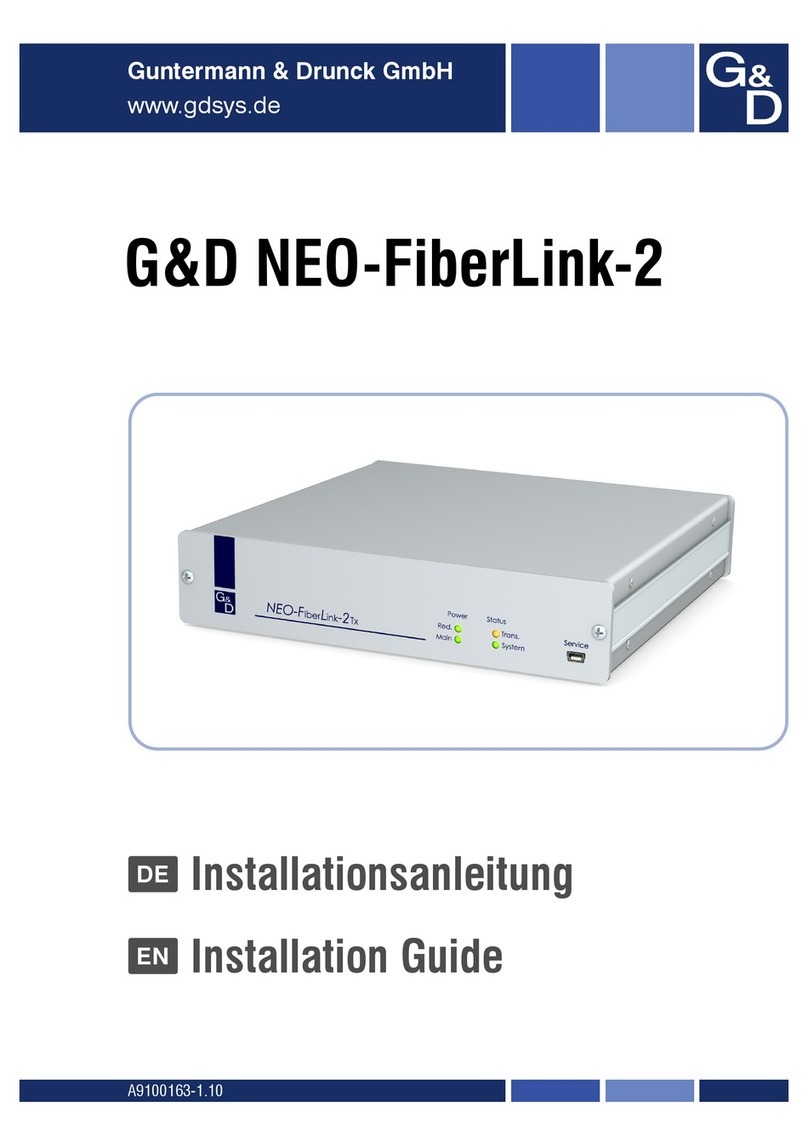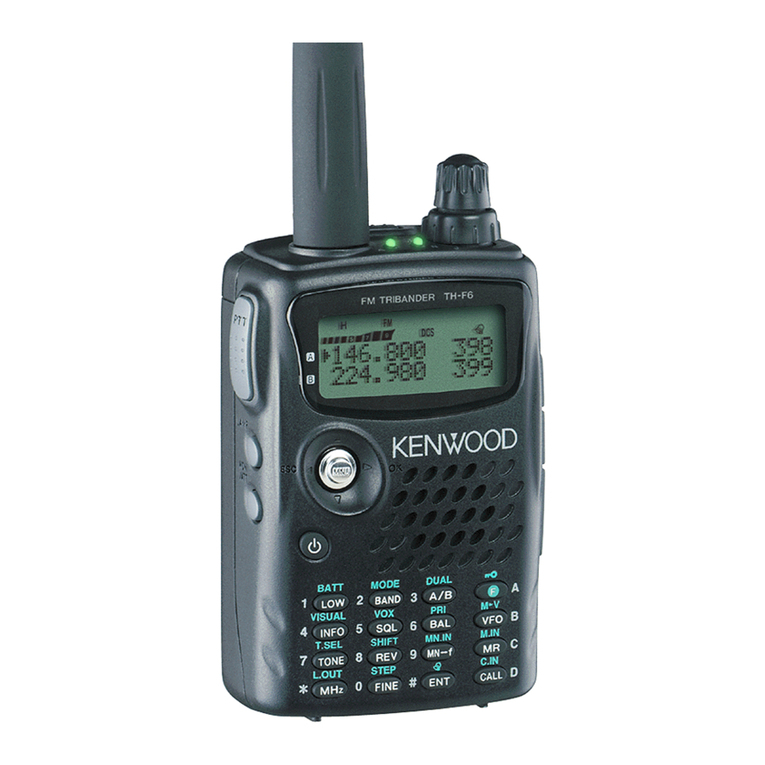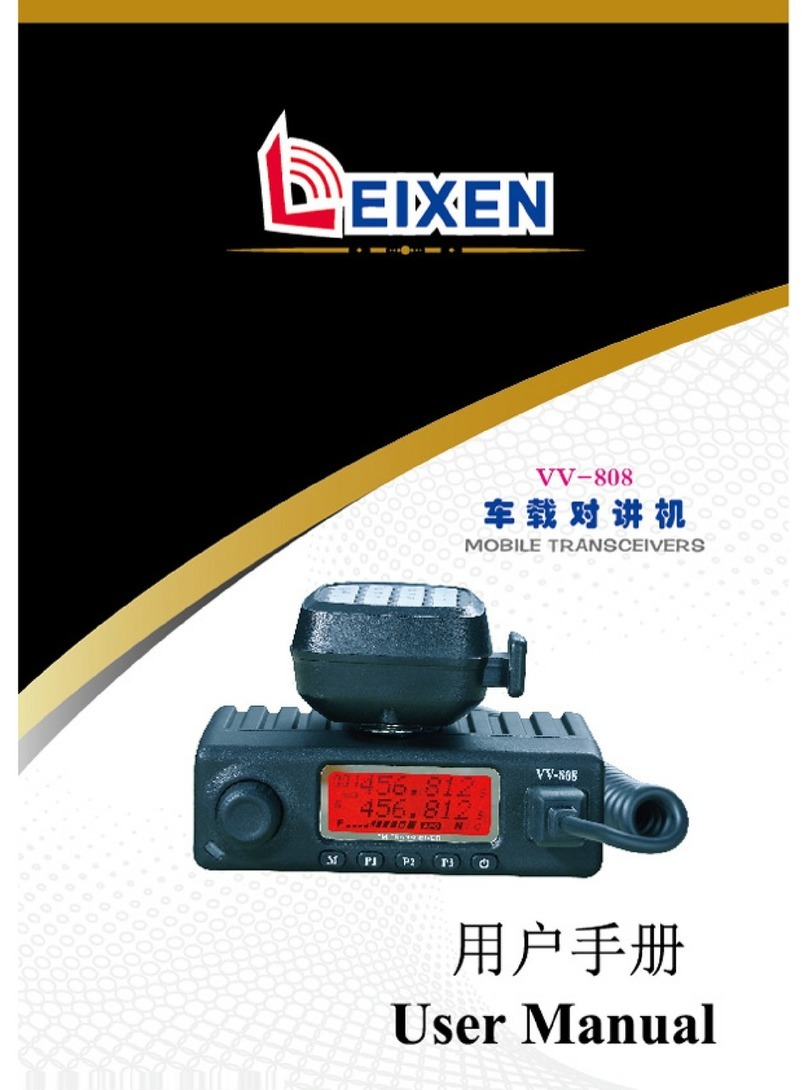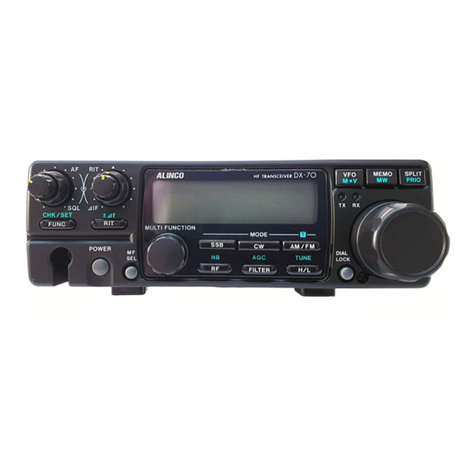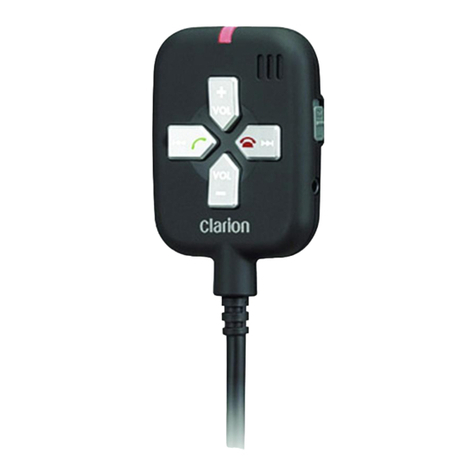Linear Technology DC1746A Quick setup guide

1
dc1746af
DEMO MANUAL DC1746A
DESCRIPTION
LTM2881:
Isolated RS485/RS422
µModule Transceiver + Power
Demonstration circuit 1746A is an isolated RS485/RS422
Module
®
transceiver + power featuring the LTM
®
2881.
The demo circuit is a 2500VRMS galvanically isolated
RS485/RS422 transceiver interface. The demo circuit
featuresanEMIoptimizedcircuitconfigurationandprinted
circuit board layout. All components are integrated into
the µModule transceiver. The demo circuit operates from
a single external supply on VCC. The part generates the
L, LT, LTC, LTM, µModule, Linear Technology and the Linear logo are registered trademarks of
Linear Technology Corporation. All other trademarks are the property of their respective owners.
PERFORMANCE SUMMARY
OPERATING PRINCIPLES
output voltage VCC2 and communicates all necessary
signaling across the isolation barrier using LTC’s isolator
µModule technology.
Design files for this circuit board are available at
http://www.linear.com/demo
(TA= 25°C)
SYMBOL PARAMETER CONDITIONS MIN TYP MAX UNITS
VCC Input Supply Range LTM2881-5
LTM2881-3
4.5
3.0
5
3
5.5
3.6
V
V
VCC2 Output Voltage ILOAD = 0mA to 100mA, DE = 0V 4.7 5 V
fMAX Maximum Data rate SLO = VCC2 20 Mbps
VIORM Maximum Working Insulation Voltage GND to GND2 560
400
VDC
VRMS
Common Mode Transient Immunity 30 kV/µs
The LTM2881 contains an isolated DC/DC converter, de-
livering power to VCC2 at 5V from the input supply, VCC.
Isolation is maintained by the separation of GND and GND2
where significant operating voltages and transients can
exist without affecting the operation of the LTM2881. The
logic side ON pin enables or shuts down the LTM2881.
RS485/RS422 signaling is controlled by the logic inputs
DE, DI, TE and RE. Connection to the transceiver pins (A,
B, Y and Z) allows full- or half-duplex operation on the
isolated side of the demo circuit. A full-/half-duplex switch
is included on the demo circuit to ease setting the system
configuration. The SLO pin configures the slew rate of the
driver output pins Y and Z.
Data is transmitted out the driver pins Y and Z from the
input DI with DE set on. Data is received through the dif-
ference in A and B to the output RO with RE set on.
The demo circuit has been designed and optimized for low
RF emissions. To this end some features of the LTM2881
are not available for evaluation on the demo circuit. The
logic supply voltage, VL, is tied to VCC on the demo circuit.
All control signals are selectable by jumper programming
only, including ON, RE, DE, TE and SLO. The spare logic
channel DIN to DOUT is not available.

2
dc1746af
DEMO MANUAL DC1746A
OPERATING PRINCIPLES
EMI mitigation techniques used include the following:
1. Four layer PCB, allowing for isolated side to logic side
‘bridge’ capacitor. The bridge capacitor is formed be-
tween an inner layer of floating copper which overlaps
the logic side and isolated side ground planes. This
structure creates two series capacitors, each with ap-
proximately 0.008" of insulation, supporting the full
dielectric withstand rating of 2500VRMS. The bridge
capacitor provides a low impedance return path for
injected currents due to parasitic capacitances of the
LTM2881’s signal and power isolating elements.
2. Discrete bridge capacitors (C3, C4) mounted between
GND2 and GND. The discrete capacitors provide ad-
ditional attenuation at frequencies below 400MHz.
Capacitors are safety rated type Y2, manufactured by
Murata, part # GA342QR7GF471KW01L.
3. Board/ground plane size has been minimized. This
reduces the dipole antenna formed between the logic
side and isolated side ground planes.
4. Top signal routing and ground floods have been opti-
mized to reduce signal loops, minimizing differential
mode radiation.
5. Common mode filtering is integrated into the input
pin header and output DB9 connector. Filtering helps
to reduce emissions caused by conducted noise and
minimizes the effects of cabling to common mode
emissions.
6. A combination of low ESL and high ESR decoupling is
used. A low ESL ceramic capacitor is located close to
the module minimizinghigh frequency noiseconduction.
High ESR tantalum capacitors are included to minimize
board resonances and prevent voltage spikes due to hot
plugging of the input supply voltage.
EMI performance is shown in Figure 1, measured using
a gigahertz transverse electromagnetic (GTEM) cell and
method detailed in IEC 61000-4-20, “Testing and Mea-
surement Techniques—Emission and Immunity Testing
in Transverse Electromagnetic Waveguides”.
FREQUENCY (MHz)
0
–30
dBµV/m
–20
0
10
20
600 700 800 900
60
DC1746A F01
–10
100 200 300 400 500 1000
30
40
50
DETECTOR = QuasiPeak
RBW = 120kHz
VBW = 300kHz
SWEEP TIME = 17s
# OF POINTS = 501
DC1746A-B
CISPR 22 CLASS B LIMIT
Figure 1. DC1746A Radiated Emissions

3
dc1746af
DEMO MANUAL DC1746A
QUICK START PROCEDURE
Figure 2. Demo Board Setup
Demonstration circuit 1746A is easy to set up and evalu-
ate the performance of the LTM2881. Refer to Figure 2
for proper measurement equipment setup and follow the
procedure below.
NOTE: When measuring the input or output voltage ripple
or high speed signals, care must be taken to avoid a long
ground lead on the oscilloscope probe.
1. Install jumpers in following positions: (all are default
except JP5 and SW1)
JP1 ON
JP2 ON
JP3 ON
JP4 ON
JP5 OFF
SW1 HALF DUPLEX
2. With power off, connect the input power supply to VCC
and GND on pin header J1.
3. Turn on the power at the input.
NOTE: Make sure that the input voltage does not exceed
6V.
4. Check for the proper output voltage. VCC2 = 5V, this can
be measured between probe points V2 and C.
5. Once the proper output voltage is established, connect
a function generator to pin DI and set to square wave
with a low of 0V, high = VCC. Set frequency to 10MHz
(20Mbps). Enable output of function generator.
6. Connect oscilloscope to pin RO and observe 10MHz
waveform. This demonstration shows data that is
transmitted from DI, loops back through half-duplex
connection, and out of RO.

4
dc1746af
DEMO MANUAL DC1746A
PCB LAYOUT
PARTS LIST
Layer 1. Top Layer
Layer 3. Signal Layer
Layer 2. Ground Plane
Layer 4. Bottom Layer
ITEM QTY REFERENCE PART DESCRIPTION MANUFACTURER/PART NUMBER
Required Circuit Components
1 1 U1 I.C., LTM2881CY-3 LINEAR LTM2881CY-3#PBF
I.C., LTM2881CY-5 LINEAR LTM2881CY-5#PBF
Hardware/Components (For Demo Board Only)
2 2 C1, C5 CAP., TANT 10F 10V 20% TAJA AVX TAJA106M010RNJ
3 1 C2 CAP., CER 1F 10V 20% 0508 MURATA LLL219R71A105MA01L
4 2 C3, C4 CAP., CER 470pF 250VAC 10% 1808 MURATA GA342QR7GF471KW01L
51J1 0.1" DOUBLE ROW HEADER, 5 ×2 PIN SAMTEC TSW-105-22-G-D
61J1 0.1" FERRITE PLATE, 5 ×2 HOLE FAIR RITE 2644247101
7 1 J2 CON, FILTERED, DSUB 9-PIN KOBICONN 152-3609
8 5 JP1-5 2mm SINGLE ROW HEADER, 3-PIN SAMTEC TMM-103-02-L-S
9 5 JP1-5 SHUNT SAMTEC 2SN-BK-G
10 1 SW1 SWITCH, DPDT, SMD COPAL CAS-220TA

5
dc1746af
DEMO MANUAL DC1746A
Information furnished by Linear Technology Corporation is believed to be accurate and reliable.
However, no responsibility is assumed for its use. LinearTechnology Corporation makes no representation
that the interconnection of its circuits as described herein will not infringe on existing patent rights.
SCHEMATIC DIAGRAM

6
dc1746af
DEMO MANUAL DC1746A
Linear Technology Corporation
1630 McCarthy Blvd., Milpitas, CA 95035-7417
(408) 432-1900 ●FAX: (408) 434-0507 ●www.linear.com
© LINEAR TECHNOLOGY CORPORATION 2010
LT 1210 • PRINTED IN USA
DEMONSTRATION BOARD IMPORTANT NOTICE
Linear Technology Corporation (LTC) provides the enclosed product(s) under the following AS IS conditions:
This demonstration board (DEMO BOARD) kit being sold or provided by Linear Technology is intended for use for ENGINEERING DEVELOPMENT
OR EVALUATION PURPOSES ONLY and is not provided by LTC for commercial use. As such, the DEMO BOARD herein may not be complete
in terms of required design-, marketing-, and/or manufacturing-related protective considerations, including but not limited to product safety
measures typically found in finished commercial goods. As a prototype, this product does not fall within the scope of the European Union direc-
tive on electromagnetic compatibility and therefore may or may not meet the technical requirements of the directive, or other regulations.
If this evaluation kit does not meet the specifications recited in the DEMO BOARD manual the kit may be returned within 30 days from the date
of delivery for a full refund. THE FOREGOING WARRANTY IS THE EXCLUSIVE WARRANTY MADE BY THE SELLER TO BUYER AND IS IN LIEU
OF ALL OTHER WARRANTIES, EXPRESSED, IMPLIED, OR STATUTORY, INCLUDING ANY WARRANTY OF MERCHANTABILITY OR FITNESS
FOR ANY PARTICULAR PURPOSE. EXCEPT TO THE EXTENT OF THIS INDEMNITY, NEITHER PARTY SHALL BE LIABLE TO THE OTHER FOR
ANY INDIRECT, SPECIAL, INCIDENTAL, OR CONSEQUENTIAL DAMAGES.
The user assumes all responsibility and liability for proper and safe handling of the goods. Further, the user releases LTC from all claims
arising from the handling or use of the goods. Due to the open construction of the product, it is the user’s responsibility to take any and all
appropriate precautions with regard to electrostatic discharge. Also be aware that the products herein may not be regulatory compliant or
agency certified (FCC, UL, CE, etc.).
No License is granted under any patent right or other intellectual property whatsoever. LTC assumes no liability for applications assistance,
customer product design, software performance, or infringement of patents or any other intellectual property rights of any kind.
LTC currently services a variety of customers for products around the world, and therefore this transaction is not exclusive.
Please read the DEMO BOARD manual prior to handling the product. Persons handling this product must have electronics training and
observe good laboratory practice standards. Common sense is encouraged.
This notice contains important safety information about temperatures and voltages. For further safety concerns, please contact a LTC applica-
tion engineer.
Mailing Address:
Linear Technology
1630 McCarthy Blvd.
Milpitas, CA 95035
Copyright © 2004, Linear Technology Corporation

X-ON Electronics
Largest Supplier of Electrical and Electronic Components
Click to view similar products for Interface Development Tools category:
Click to view products by Analog Devices manufacturer:
Other Similar products are found below :
CY4607M DP130SSEVM ISO3086TEVM-436 SP338EER1-0A-EB ADM00276 ADP5585CP-EVALZ PEX8724-CA RDK PEX 8732-CA
RDK PEX8747-CA RDK CHA2066-99F AS8650-DB MLX80104 TESTINTERFACE I2C-CPEV/NOPB ISO35TEVM-434
KIT33978EKEVB XR17D158CV-0A-EVB XR17V358/SP339-E4-EB XR18910ILEVB XR22804IL56-0A-EB ZSC31050KIT V3.1
ZSC31150KIT V1.2 SCRUBBER-EVM SI838XISO-KIT 73931-3022 XIO2200AEVM XIB-E XBIB-U-SP TW-DONGLE-USB EVAL-
ADM2483EBZ EVAL-ADM2491EEBZ ATUSB-PCB-80146 EVB-USB83340 MAX9921EVKIT MAXREFDES23DB#
MAX9291COAXEVKIT# MAX9286COAXEVKIT# MAX3535EEVKIT+ MAX3100EVKIT MAX13235EEVKIT MAX14970EVKIT#
MAX14826EVKIT# 3298 XR21B1424IV64-0A-EVB XR21B1421IL24-0A-EVB XTIB-U XR17D152CM-0A-EVB XR22802IL56-0A-EB
9291COAXEVKIT# XTIB-R SERDESUR-43USBNOPB
This manual suits for next models
1
Table of contents
Other Linear Technology Transceiver manuals
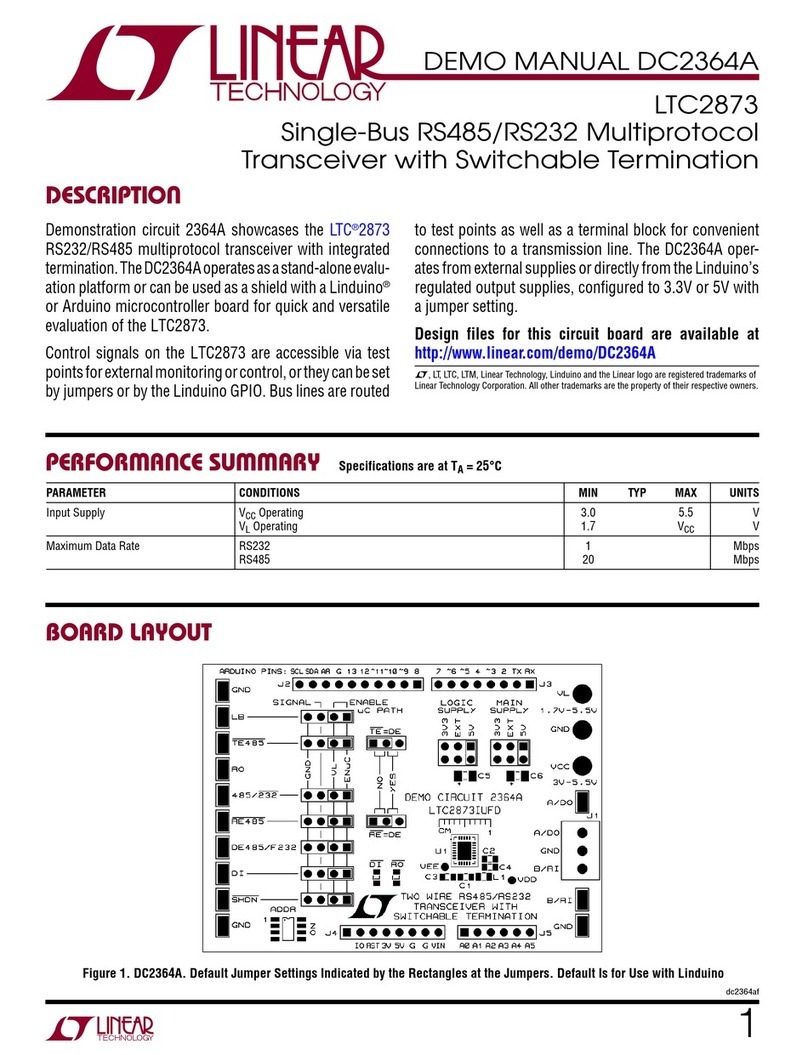
Linear Technology
Linear Technology DC2364A Quick setup guide
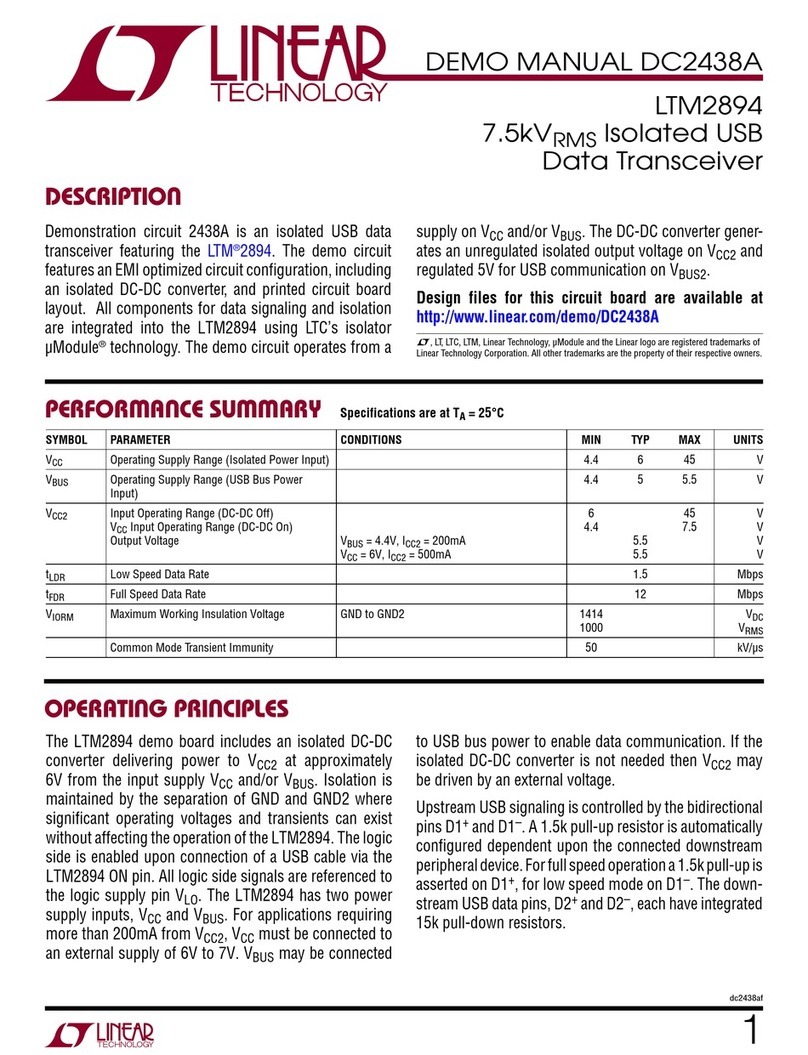
Linear Technology
Linear Technology DC2438A Quick setup guide
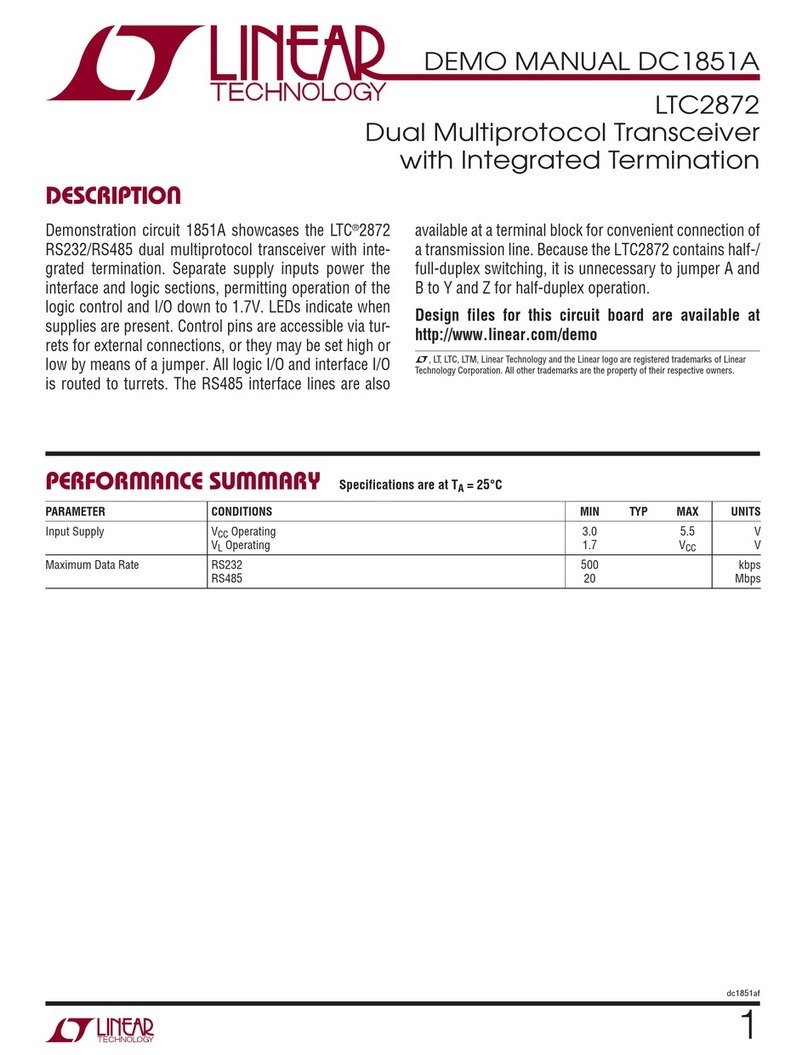
Linear Technology
Linear Technology DC1851A Quick setup guide
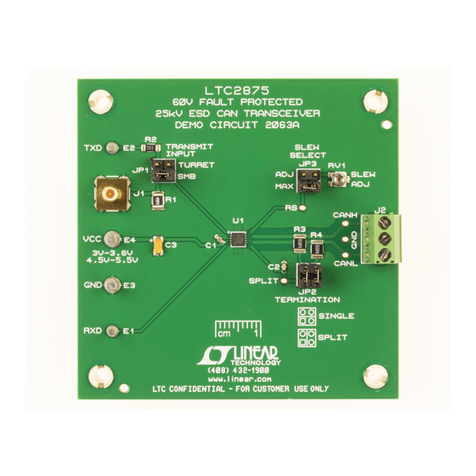
Linear Technology
Linear Technology DC2063A Quick setup guide
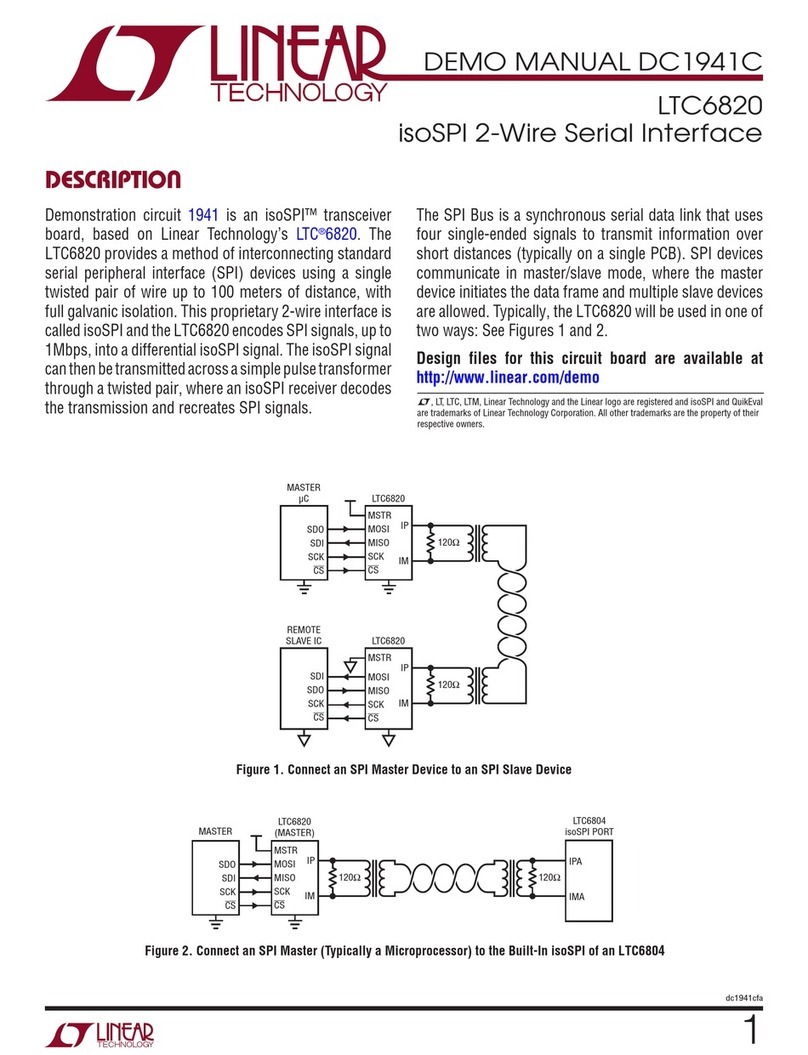
Linear Technology
Linear Technology DC1941C Quick setup guide
